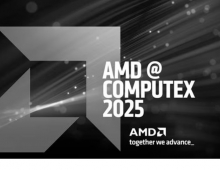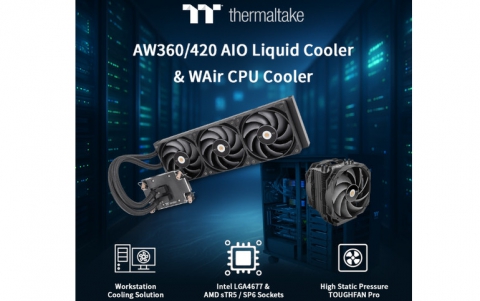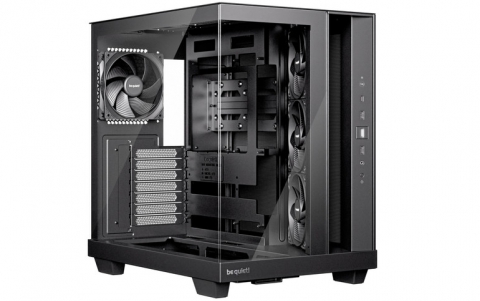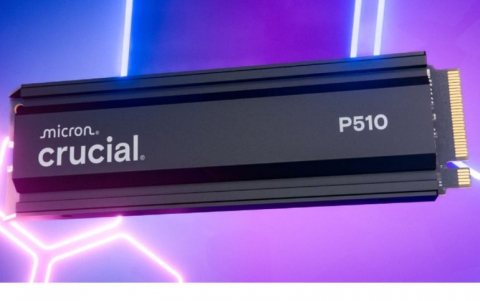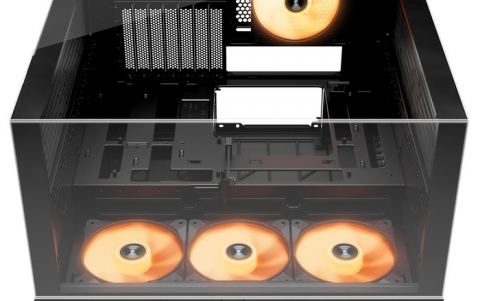
AMD Provides More Details On Mantle
Last month at its unveiling of the AMD Radeon R9 and R7 Series GPUs, AMD announced a technology called Mantle. Mantle is giving developers low-level access to PC graphics hardware and AMD has today provided more details about it.
According to Ritche Corpus, director of ISV Gaming and Alliances, AMD, the core pronciples of Mantle are:
- A thin driver within the AMD Catalyst software suite that allows applications to speak directly to the Graphics Core Next architecture.
- A Graphics Core Next-enabled graphics chip, such as the AMD Radeon R9 Series, R7 Series or HD 7000 Series GPUs.
- And an application or game engine written to utilize the Mantle SDK, such as the Frostbite 3 engine within Battlefield 4.
Working in concert, these three ingredients provide a complete hardware/software stack thats able to take advantage of an efficient and low-overhead rendering pipeline. Mantle is described as a graphics language thats symbiotic with AMD's Graphics Core Next architecture, which developers can use to augment their game engine for ideal performance on that architecture.
At present, each console currently available for purchase on todays market runs a substantially different graphics architecture from the next. And each of those consoles substantially differs from the graphics hardware available in the latest PC video cards. Thats quite messy for developers.
Graphics Core Next is unifying the console ecosystem (and much of the PC market) under a common graphics architecture. But Mantle is the software remedy for these difficult choices, allowing developers to uniformly work across multiple platforms in a single endeavorconsoles and PCs may be treated equitably.
Mantle is not the initial language with which developers are writing their games on each platform, as some have surmised; the point of Mantle is that its easy to reuse, in whole or in part, the development effort expended on the next-generation consoles when bringing the same game to life on the PC. This is because Mantle allows developers to use the same features and programming techniques they are already utilizing for next-gen game consoles. And while the initial iteration of Mantle is intended specifically for PCs, it has been designed from the beginning to be extensible to other platforms as well.
Mantle will also be exposing a large variety of hardware features not currently available in existing graphics APIs. Those features will be used to improve graphics performance and to allow new graphics algorithms to be implemented.
With respect to performance, different graphics architectures yield optimal performance when game code is written in a certain way. There are always multiple routes to achieving a certain graphical effect in the code, but the performance difference between the optimized way and another way can be quite substantial. Todays graphics APIs still offer the flexibility to take multiple approaches, but none of them will be as efficient as directly accessing the GPU hardware via a minimal abstraction layer, which is what Mantle provides.
Corpus also sad that Mantle is not a replacement for industry-standard APIs like Microsofts DirectX. There is and will continue to be a need for graphics programming interfaces and languages that can support a broad range of existing and future GPUs. Mantle complements these programming models by providing new options for those developers looking to extract more from the platforms they spend much of their time working on.
Developers using Mantle are free to implement whatever optimizations they choose to maximize the performance of their game for everyone.
In short, Mantle is a new and better way to bring the code developers are already writing for next-generation consoles to life on the PC. It achieves this by being similar to, and often compatible with, the code they are already writing for those platforms.
- A thin driver within the AMD Catalyst software suite that allows applications to speak directly to the Graphics Core Next architecture.
- A Graphics Core Next-enabled graphics chip, such as the AMD Radeon R9 Series, R7 Series or HD 7000 Series GPUs.
- And an application or game engine written to utilize the Mantle SDK, such as the Frostbite 3 engine within Battlefield 4.
Working in concert, these three ingredients provide a complete hardware/software stack thats able to take advantage of an efficient and low-overhead rendering pipeline. Mantle is described as a graphics language thats symbiotic with AMD's Graphics Core Next architecture, which developers can use to augment their game engine for ideal performance on that architecture.
At present, each console currently available for purchase on todays market runs a substantially different graphics architecture from the next. And each of those consoles substantially differs from the graphics hardware available in the latest PC video cards. Thats quite messy for developers.
Graphics Core Next is unifying the console ecosystem (and much of the PC market) under a common graphics architecture. But Mantle is the software remedy for these difficult choices, allowing developers to uniformly work across multiple platforms in a single endeavorconsoles and PCs may be treated equitably.
Mantle is not the initial language with which developers are writing their games on each platform, as some have surmised; the point of Mantle is that its easy to reuse, in whole or in part, the development effort expended on the next-generation consoles when bringing the same game to life on the PC. This is because Mantle allows developers to use the same features and programming techniques they are already utilizing for next-gen game consoles. And while the initial iteration of Mantle is intended specifically for PCs, it has been designed from the beginning to be extensible to other platforms as well.
Mantle will also be exposing a large variety of hardware features not currently available in existing graphics APIs. Those features will be used to improve graphics performance and to allow new graphics algorithms to be implemented.
With respect to performance, different graphics architectures yield optimal performance when game code is written in a certain way. There are always multiple routes to achieving a certain graphical effect in the code, but the performance difference between the optimized way and another way can be quite substantial. Todays graphics APIs still offer the flexibility to take multiple approaches, but none of them will be as efficient as directly accessing the GPU hardware via a minimal abstraction layer, which is what Mantle provides.
Corpus also sad that Mantle is not a replacement for industry-standard APIs like Microsofts DirectX. There is and will continue to be a need for graphics programming interfaces and languages that can support a broad range of existing and future GPUs. Mantle complements these programming models by providing new options for those developers looking to extract more from the platforms they spend much of their time working on.
Developers using Mantle are free to implement whatever optimizations they choose to maximize the performance of their game for everyone.
In short, Mantle is a new and better way to bring the code developers are already writing for next-generation consoles to life on the PC. It achieves this by being similar to, and often compatible with, the code they are already writing for those platforms.






